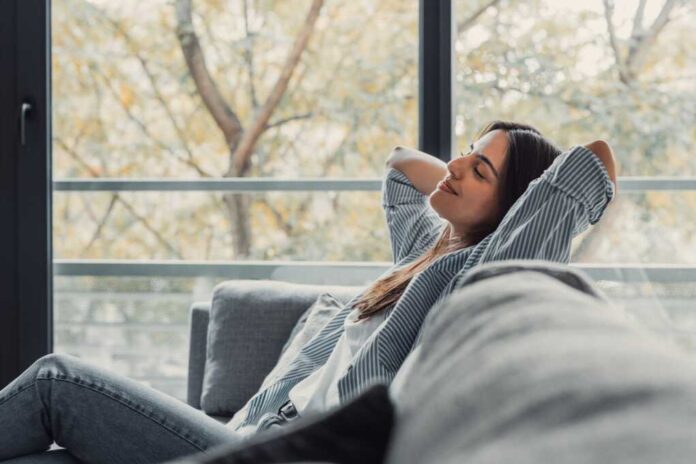
Transforming a spare room into a wellness sanctuary could be the key to managing stress and enhancing your overall health, offering benefits that extend far beyond typical home improvements.
At a Glance
- Converting unused spaces into wellness rooms is gaining popularity as people prioritize mental and physical health at home
- Key design elements include natural light, calming colors, biophilic elements, and comfortable furnishings
- Wellness spaces can reduce stress, improve mood, enhance productivity, and promote better sleep
- These personal sanctuaries can be customized for meditation, exercise, relaxation, or all three
Why Wellness Spaces Are Becoming Essential
As global stress and anxiety levels rise, homes are increasingly becoming sanctuaries for mental and physical wellness. The pandemic dramatically changed our relationship with our living spaces, compelling many to reconsider how their homes support overall health. With more people working remotely and spending increased time at home, the need for dedicated areas that promote relaxation and self-care has become more apparent. Wellness-focused rooms offer a deliberate separation between work, household responsibilities, and personal rejuvenation time.
These specialized spaces deliver measurable health benefits. Well-designed wellness rooms can reduce stress hormones, improve mood through strategic use of color and light, enhance productivity by providing mental clarity, and promote better sleep by creating associations between certain spaces and relaxation. For adults over 40, who may be juggling career demands with family responsibilities and increasing health concerns, having a dedicated wellness space can be particularly valuable for maintaining balance.
#PR: New York City Health + Hospitals/Coler Opens #Wellness Room Offering Emotional and Mental Health Support for its Long-Term Care Staff ~ https://t.co/LgDC7lVqJu via @NYCHealthSystem
— Mark A. McKenney (@MarktheSpaman) May 4, 2024
Essential Design Elements for Your Wellness Room
Creating an effective wellness space involves thoughtful design choices that engage multiple senses. Maximize natural light, which regulates circadian rhythms and boosts vitamin D production – particularly important for adults over 40 who may be experiencing age-related changes in sleep patterns. Choose color palettes featuring blues, greens, and neutrals that promote calmness. Declutter the space completely, as visual chaos contributes significantly to mental stress. Incorporate biophilic elements like plants, natural materials, and nature-inspired textures to capitalize on the well-documented psychological benefits of connecting with nature.
Carefully consider lighting with layered options that can be adjusted for different activities – brighter for morning yoga or journaling, softer for meditation or relaxation practices. Temperature control is equally important; slightly cooler temperatures (around 65-68°F) are ideal for exercise, while warmer environments promote relaxation. High-quality air filtration systems can remove allergens and pollutants, creating a physically healthier environment. Finally, incorporate sound management through acoustic panels, white noise machines, or sound systems for guided meditations or calming music.
Personalizing Your Wellness Sanctuary
The beauty of creating a home wellness space lies in its versatility and adaptability to individual needs. Some homeowners are creating multipurpose wellness rooms that can transition between different functions. Designer Gonzalo Bueno notes, “Small sophisticated home gyms, music rooms, meditation rooms and Zen gardens are some of the wellness spaces we’ve designed recently. Spaces for wellness, retreat and recharging are all really popular right now.”
For adults focused on maintaining physical health, incorporating equipment for gentle exercise like yoga, resistance training, or balance work can be beneficial. Those prioritizing mental wellbeing might create a meditation corner with comfortable cushions, mindfulness tools, and possibly an altar or meaningful objects. For sensory relaxation, consider elements like weighted blankets, aromatherapy diffusers with calming essential oils like lavender or chamomile, or even a small water feature. The most effective wellness spaces reflect personal preferences and address specific health goals, whether that’s managing chronic pain, improving flexibility, reducing anxiety, or simply carving out time for self-care.
Kokoon Prime Health
Setting the standard for your advanced tailor-made individualized healthcare.• Diagnostics
• Medical Services
• Stem Cell Treatments
• Nutrition
• Physical Health
• Mental Health Treatments
•Wellness
•Kokoon Clinics Bringing our medical and wellness… pic.twitter.com/eRxmTOIm8V— KOKOON PRIME HEALTH (@KokoonSpain) February 7, 2025
Making Room for Wellness in Any Home
While dedicated wellness rooms might seem like a luxury for those with large homes, the concept can be adapted to fit any living situation. Even in smaller spaces, corners of rooms can be transformed into wellness nooks with thoughtful design. Room dividers, curtains, or strategically placed furniture can create separation. Convertible spaces that serve multiple functions but can be quickly arranged for wellness activities offer practicality for those with limited square footage. The investment in creating even a modest wellness area pays dividends through improved health outcomes and quality of life as we age.
Sources:
https://www.fgmarchitects.com/post/making-the-case-for-wellness-rooms-in-first-responder-design


















